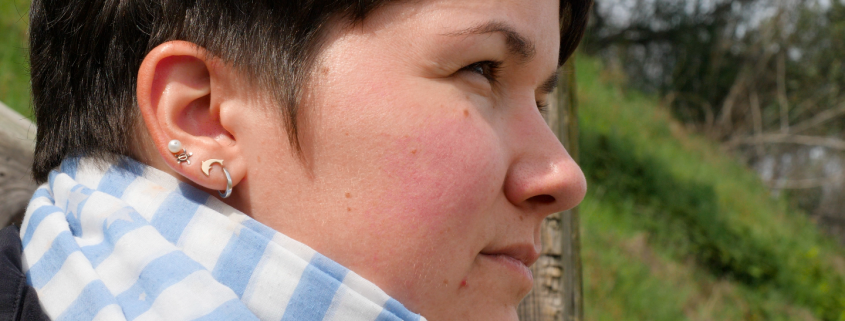”Nothing about us without us!” – Producing ’We Are Visible’
My film We Are Visible, a feature-length documentary about people living with Ehlers-Danlos syndrome all around the globe, is in its final production phase, and it would be the time to release a trailer now.
However, putting together a trailer turned out to be quite a challenge for me.
I kept asking myself: How do I tell the stories of six families in just one trailer? While I tried to solve this issue and give every person appearing in my film the time they deserve, all of a sudden, three trailer-like clips emerged. It might be a bit unconventional to have more than one trailer.
But my whole filmmaking process wouldn’t fit the criteria of conventional anyway.
I looked at this film not only with a journalist’s eyes but also with the eyes of someone who is part of the disability community. And my approach varied in some areas from what other journalists would see as ”good practice.”
We Are Visible is more than just a film by a disabled filmmaker about a disability.
It is a film that actively involved all contributors in the pre- and post-production process.
Why? Because I wanted to change the common journalistic practice that completely excludes the people in the story. I don’t own the story of any of the people in my film as a journalist. I merely have the privilege and permission to share it.
”Nothing about us without us,”
is the motto many disability advocates use when they talk about media representation of disability. I agree. I believe we can only improve reporting on disability by involving the people we talk about. Even though I am a disabled journalist myself, I don’t believe I can speak for every disabled person. Nobody can. So in order to improve the representation of the disability community, we need to change our attitude towards some journalistic practices.
”Never let the interviewee or anyone else review or even change your work,”
I was told many times. ”No journalist does that.” But when it comes to disability reporting, this rule doesn’t work. Yes, it has been used forever. And yes, most of the big media outlets have successfully produced high-quality news by adhering to it. However, does it really apply when reporting on disability?
I am wondering if reporting would have improved if we did change our approach?
Maybe if we involved the people we talk about in our work, advocates wouldn’t still widely criticize media for misrepresenting the community?
So I tried to do something different and let all the people I interviewed review my work.
We will see if this turns out to be the change I want to see, or if the many of my colleagues are right when they say I am only causing myself more stress and work by doing so. At least, I tried.
And if you are still interested in those unconventional trailers I mentioned at the beginning of this story,
you can watch them here.
Feel free to let me know which one you like best. Since I am already breaking all rules, I might as well let my community choose their favorite trailer!

 Karina Sturm
Karina Sturm 










Leave a Reply
Want to join the discussion?Feel free to contribute!